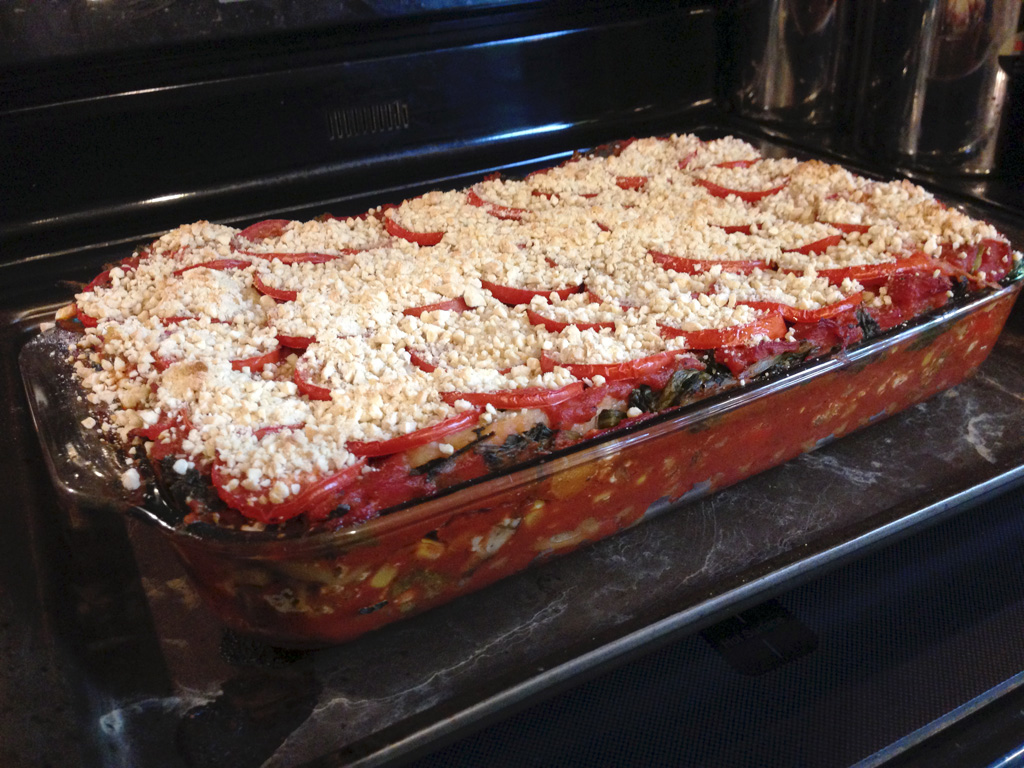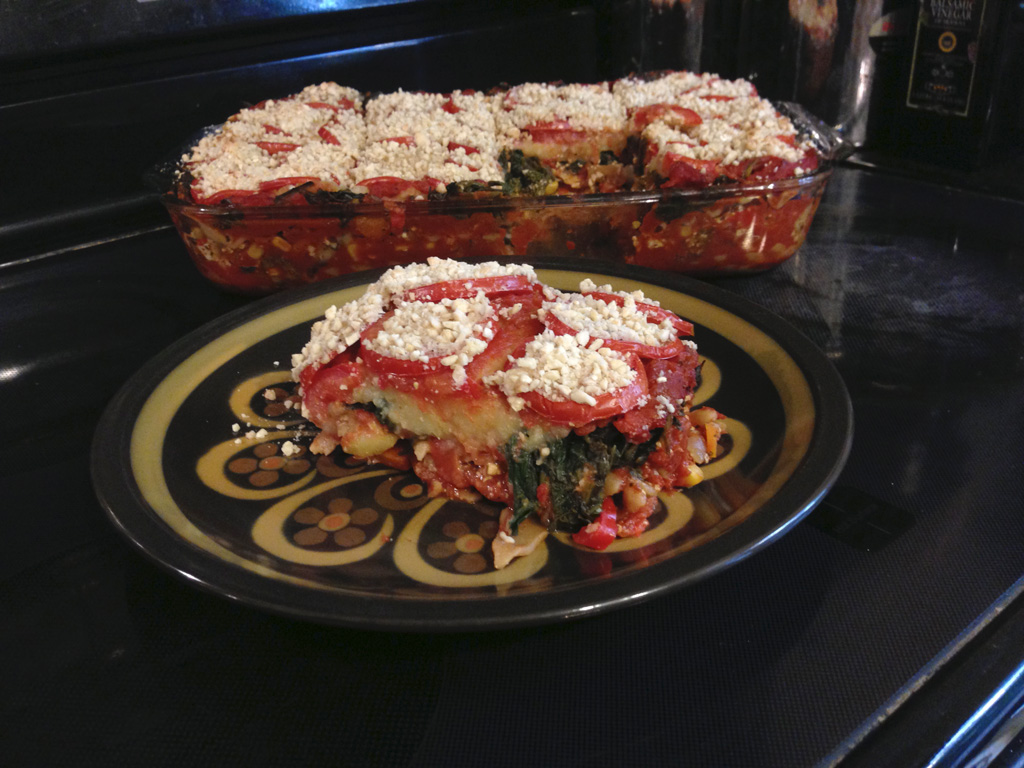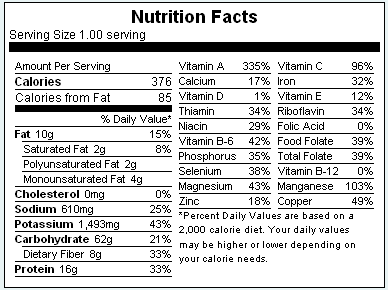Another Engine 2 Diet recipe I’ve been dying to try since I first picked the book up years ago is the Raise The Roof Sweet Potato Lasagna. The idea of having a vegan lasagna sort of broke my mind. I’ve had vegetable lasagna, but that still had tons of cheesy goodness, and often used a meat-based sauce as well. My favorite lasagnas are still the ones loaded with different kinds of meats, cheeses and then topped off with even more cheese. Could a low fat vegan lasagna be up to the challenge; or actually could it even be edible? With tons of good reviews online I just had to try it for myself, and overall wasn’t disappointed!
The big divergence from a regular vegetable lasagna is the lack of cheese. While it is loaded with lots of vegetables of various kinds (peppers, onions, broccoli, corn) it obviously can’t have any cheese and still fit the parameters of the Engine 2 Diet, or any other vegan diet. To make up for this the recipe calls for two relatively unique things. The first thing it calls for is adding tofu to the vegetable mix. This somewhat approximates the cheese layer you’d have in the middle with ricotta cheese. The second unique thing is the sweet potatoes. I suppose rather than topping the top off with a layer of ooey gooey mozzarella cheesy goodness baked on top you want to add something that adds a nice texture and flavor enhancer in the layer of mashed sweet potatoes. That’s not the very very top layer, there is still a layer of fresh tomatoes and ground up cashews, but overall you get a good effect.
I tried following the directions to the recipe exactly as written but ran into some problems. The first big problem was that the quantities seem to be off. When I was done assembling my lasagna I still had half of the vegetables in the bowl. I ended up freezing them and will use them to make another lasagna, assuming that’s something you can do with it. I also ended up running out of height in my casserole dish by the time I was done adding the spinach and sweet potato layer. That turned out to be a good thing though, because I was also out of sauce. It seems two jars of sauce is something that is supposed to last for two more layers, which it looks like I’d need a dish twice as deep for. So the end result was also using half as much pasta and having one whole less layer. I think something must be very off with the recommended number of ingredients, or I have oversized vegetables and cans. Lastly, tasting the filling it seemed a bit bland, but I know they are shooting for lower sodium so didn’t add any salt. However once I put the fresh tomatoes on top I couldn’t help myself but to liberally sprinkle with salt and pepper, to the quantity I would use for a Caprese Salad. The cooking times however were spot on.
When I cut into the lasagna after the fifteen minute rest it felt just like cutting into a non-vegan lasagna. It too oozed gooey tastiness but that was coming from the layers of sweet potato and other vegetables, not from some cheese. You can see what the lasagna looked like in cross section and from the top in the pictures below. The big thing of course is the taste. How did this hold up to a regular lasagna? It tasted quite good, actually, but nothing like a regular lasagna. A lot of the flavor in a regular lasagna is imparted by the meat and cheese. The idea this would taste the same would have been unrealistic. I think even if you made this with cheese substitute products it would have fallen flat. Their attempt to rise above emulation and go for its own flavor profile is what made this lasagna work. I wasn’t sitting there thinking, “How much does this not taste like the real thing?” Instead I was enjoying it for what it was, and it was quite enjoyable indeed. If you dislike any of the vegetable components on your own this may not work for you. For me however it turned out great. I even enjoyed the tofu in this recipe. I’m not a fan of tofu, something I’ll have to get over for my vegan and vegetarian diet phases obviously. The way this was prepared however had it fully absorbing the the flavors of the other ingredients. That totally muted the dreaded tofu aftertaste that often rears its ugly head, as well as getting around the texture issue with this product.
The nutrient profile for this recipe is quite good as well. It is loaded with a great mix of micronutrients, keeps the sodium reasonably low, and has a good balance of protein, fat and carbs (to say nothing for being quite high in fiber).
Overall I rate this very high. I’m looking forward to eating this again in the very near future.







 2013-06-16
in
2013-06-16
in

 4 min read
4 min read